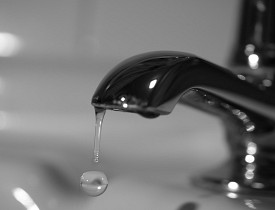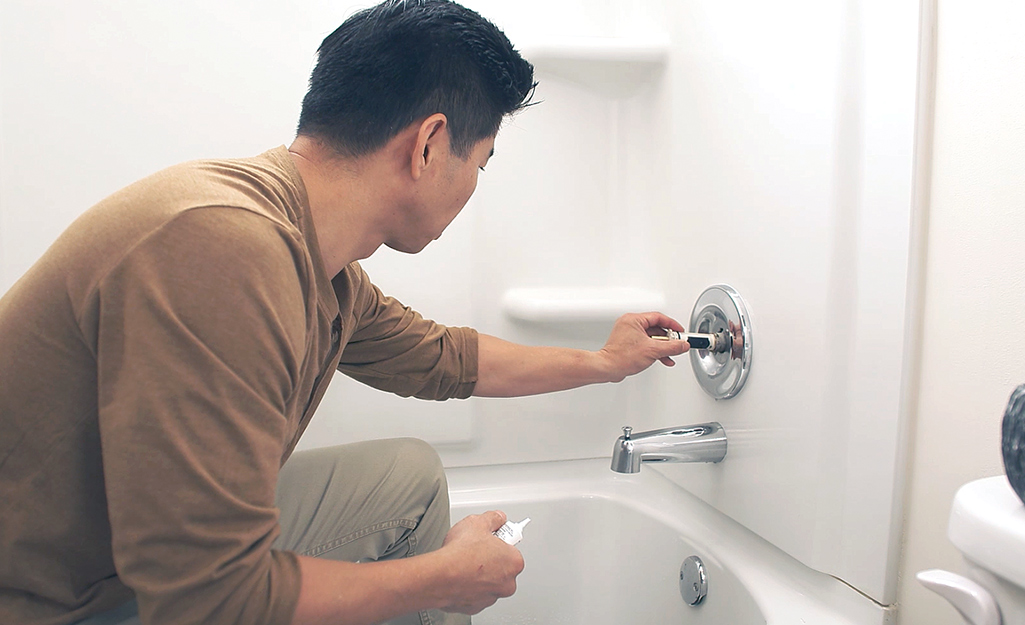Right here on the next paragraphs you might get lots of amazing guidance involving Why It's Important to Fix Leaky Faucets.

Trickling taps may appear like a minor trouble, however their effect goes beyond simply the nuisance of the noise. From drainage to incurring unneeded financial prices and health and wellness threats, neglecting a dripping tap can bring about numerous consequences. In this short article, we'll look into why it's essential to resolve this usual household problem immediately and effectively.
Wastage of Water
Environmental Effect
Trickling faucets add significantly to water waste. According to the Environmental Protection Agency (EPA), a solitary faucet leaking at one drip per second can throw away more than 3,000 gallons of water annually. This not just stress water resources however likewise impacts ecosystems and wildlife depending on them.
Financial Expenses
Raised Water Costs
Beyond the ecological impact, trickling taps can inflate water expenses considerably. The gathered wastefulness over time translates right into greater energy expenditures, which can have been stayed clear of with prompt fixings.
Possible Residential Or Commercial Property Damage
Moreover, extended leaking can lead to harm to fixtures and surfaces bordering the faucet. Water accumulation can create staining, corrosion, and even architectural problems if left neglected, leading to additional fixing expenses.
Wellness Worries
Mold And Mildew and Mildew Development
The continuous presence of moisture from a dripping faucet creates an excellent atmosphere for mold and mildew development. These fungi not just compromise interior air quality yet likewise posture wellness dangers, especially for individuals with respiratory problems or allergic reactions.
Waterborne Diseases
Stationary water in trickling faucets can become a breeding place for germs and other pathogens, increasing the danger of waterborne diseases. Impurities such as Legionella germs thrive in stationary water, potentially bring about severe illnesses when consumed or inhaled.
Do it yourself vs. Professional Repair service
Pros and Cons of DIY Fixing
While some might attempt to take care of a dripping tap themselves, DIY fixings feature their own collection of difficulties. Without correct knowledge and devices, DIY efforts can worsen the problem or lead to insufficient fixings, prolonging the problem.
Advantages of Hiring a Specialist Plumber
Employing a professional plumber makes sure that the underlying root cause of the leaking faucet is dealt with effectively. Plumbings possess the experience and tools to identify and repair tap problems effectively, saving time and decreasing the danger of further damages.
Step-by-Step Guide to Fixing a Dripping Tap
Devices Required
Prior to attempting to deal with a leaking tap, gather the necessary devices, including an adjustable wrench, screwdrivers, substitute parts (such as washing machines or cartridges), and plumber's tape.
Common Faucet Issues and Their Solutions
Determine the type of faucet and the details issue triggering the drip. Usual problems consist of damaged washers, corroded shutoff seats, or damaged O-rings. Refer to producer guidelines or on the internet tutorials for detailed advice on repairs.
Preventive Measures
Routine Upkeep Tips
To stop trickling taps, perform routine maintenance such as cleaning aerators, examining for leaks, and replacing damaged components immediately. In addition, take into consideration mounting water-saving gadgets or updating to much more effective fixtures.
Importance of Prompt Repairs
Addressing trickling taps as quickly as they're observed stops further water wastage and possible damage, ultimately conserving both water and money in the long run.
Influence On Residential Or Commercial Property Worth
Understanding of Well-Maintained Residential Or Commercial Property
Keeping a property in good condition, consisting of addressing maintenance problems like leaking taps, improves its perceived value and worth amongst prospective customers or occupants.
Impact on Resale Value
Residences with well-kept plumbing fixtures, including faucets, command higher resale values in the realty market. Addressing leaking taps can add to a favorable impact throughout home examinations and arrangements.
Ecological Duty
Private Contribution to Conservation
Taking responsibility for fixing trickling taps lines up with broader efforts towards water conservation and environmental sustainability. Every person's activities collectively make a significant influence on maintaining valuable resources.
Sustainable Living Practices
By focusing on timely repair work and adopting water-saving habits, people contribute to lasting living practices that profit both present and future generations.
Verdict
Addressing a trickling faucet surpasses simple convenience; it's an essential action towards saving water, reducing financial expenses, and safeguarding health and wellness and residential or commercial property. Whether via DIY repair services or professional support, doing something about it to fix leaking taps is a tiny yet impactful way to advertise responsible stewardship of resources and contribute to a much healthier, extra lasting future.
How to Fix a Leaky Faucet: Step-by-Step Repair Guide
A leaky faucet may seem like a simple annoyance, but if it's not fixed promptly, that leak could cost hundreds to potentially thousands. From water damage to mold, mildew, and high water bills, even a tiny leak can be catastrophic if left unattended. Damage like this can even affect the overall value of your home, so it's important to take the right approach for leaky faucet repair. You may need the help of a plumber in some cases, but we've got a few tips you can try on how to fix a leaky faucet before calling the pros.
Four Faucet Types
When you're learning how to fix a leaky faucet, the first step is knowing what kind of faucet you're working with! There are four common types.
Cartridge Faucets
Cartridge faucets come in one- or two-handled varieties. In one-handled cartridge faucets, hot and cold water combines in a single cartridge. In the two-handled versions, hot and cold water are controlled separately and mixed in the faucet.
Ball Faucets
Ball faucets have a single lever you push up and down to adjust the pressure and rotate to change the temperature. A slotted metal ball controls the amount of water allowed into the spout.
Compression Washer Faucets
They're the oldest type of faucet, but they're still used in many homes — especially older ones. Compression faucets have two separate handles that, when turned, raise or lower the washer that seals a water valve. This valve stops water from flowing through the faucet when it is turned off.
Disc Faucets
Disc faucets rarely need to be repaired due to their maintenance-free design. The water flow is controlled by two discs — the upper one raises and lowers against a fixed lower disc, creating a watertight seal. If your disc faucet starts leaking, you may need to replace the seals or clean residue buildup from the inlets.
Fixing a Leaky Faucet
Step 1: Turn Off the Water
Whether you're learning how to fix a leaky bathtub faucet or how to fix a leaky kitchen faucet, always turn off the water supply to your working area when you're fixing a leak. The last thing you want is a flood added to your list of things to fix.
Look for the shutoff valves below your sink or around the tub and turn them clockwise to stop the water flow. If your faucet doesn't have shutoff valves, you may need to turn off the water for the whole house. Check to make sure it's off by turning the faucet on. If nothing comes out, you're ready to start the repair.
Step 2: Take Apart the Faucet
How you disassemble your faucet depends on the type of fixture you have. You can use a flathead screwdriver to remove the caps on top of the handle or handles for cartridge and compression faucets. Inside, you should see handle screws. Unscrew these with a screwdriver to remove the handle.
Disc- and ball-style faucets will typically have an inlet screw near the handle, and removing that will reveal the interior of the faucet.
Detach the Valve Stem
For cartridge- and compression-style faucets, you'll see the inner valve stem or cartridge once you remove the faucet handles. If you have a compression faucet, unscrew the brass valve stem. If you have a cartridge faucet, pull out the cartridge. If your cartridge has been in place for a while, it may require some tools or extra force to remove it due to mineral deposits.
Examine and Replace Parts
Once you've removed the parts, check them out to confirm what needs to be replaced. You may see corroded rubber washers, O-rings, stems, or cartridges. On a ball-style faucet, check the seats and springs for damage.
If you need to repair a leaky disc faucet, check the inlet and seals on the lower disc.
Once you determine what parts must be replaced, visit your local hardware store. Bring the damaged parts with you to ensure you can purchase the correct components to replace them.
Clean Valves and Faucet Cavity
If you've removed a stem or cartridge, you may notice mineral buildup in the faucet's threads. Use white vinegar to clean the valve seat by soaking it for a few minutes, then scrub it away with a soft toothbrush and rinse with warm water. You can also clean the interior of the faucet in the same way.
Reassemble the Faucet
Once your faucet is cleaned and the required parts have been replaced, it's time to reassemble it. Put the pieces back together and slowly turn the water supply back on. Doing this slowly is crucial because too much initial water pressure can damage the new hardware you've just installed.
https://homewarranty.firstam.com/blog/how-to-fix-leaky-faucet

Do you like reading up on Leaky Faucets: Why They Happen & What to Do About Them? Write a remark down the page. We will be glad to listen to your thoughts about this blog post. We are looking forward that you visit us again soon. Appreciated our write up? Please share it. Help others find it. Kudos for being here. Kindly check our blog back soon.